La publicación de Batiscafo 2008 – 2010 - Dropbox
La publicación de Batiscafo 2008 – 2010 - Dropbox
La publicación de Batiscafo 2008 – 2010 - Dropbox
You also want an ePaper? Increase the reach of your titles
YUMPU automatically turns print PDFs into web optimized ePapers that Google loves.
e<strong>de</strong>mption of imperfection, has the ten<strong>de</strong>ncy<br />
to be wrong.<br />
Giuseppe Campuzano presents an<br />
interpretation of transvestitism in Cuba.<br />
The project Museo Travesti <strong>de</strong>l Peru (Peruvian<br />
Transvestite Museum) is research in progress. For<br />
the Peruvian artist, transvestitism is a phenomenon<br />
integral to the history of his country<br />
and, by extension, that of <strong>La</strong>tin America<br />
as a whole. His purpose was not to create a<br />
museum for transvestites, from the point of<br />
view of gen<strong>de</strong>r discourse, but a “transvestite<br />
museum,” that is, a space of reflection where<br />
traditional limits within the institution-museum<br />
are subverted and in which history draws<br />
away from official topics, like nationality or<br />
i<strong>de</strong>ntity, with the purpose of <strong>de</strong>-constructing<br />
them.<br />
To un<strong>de</strong>rstand Cuban reality, Giuseppe<br />
met sociologists, historians, anthropologists,<br />
filmmakers and artists. He also carried out an<br />
extensive literary review of texts by José Lezama<br />
Lima, José Marti and Severo Sarduy. He is an<br />
artist-curator. This time, in or<strong>de</strong>r to approach<br />
the topic of transvestitism, he collected photograps<br />
from the 1920s, journalistic papers and<br />
also located works by Cuban artists who have<br />
referenced the subject. Finally, he created a<br />
proposal which combines multiple perspectives,<br />
whether semantic, religious or architectonic.<br />
For Giuseppe, ‘to transvestite’ is to resist, it is<br />
the way our culture may sustain itself.<br />
<strong>La</strong>lo Quiroz, also a Peruvian artist, has<br />
NOVEMBER/DECEMBER / NOVIEMBRE/DICIEMBRE <strong>2008</strong><br />
<strong>de</strong> Walter tien<strong>de</strong> al error.<br />
Giuseppe Campuzano diseña su propuesta a partir<br />
<strong>de</strong>l tema el travestismo en Cuba. El proyecto Museo<br />
Travesti <strong>de</strong>l Perú prece<strong>de</strong> a esta investigación aún<br />
en proceso. Para el artista peruano, lo travesti es<br />
un recurso para incidir en los procesos históricos<br />
<strong>de</strong> su país y por extensión en los <strong>de</strong> la América<br />
<strong>La</strong>tina toda. Su propósito no es crear un museo <strong>de</strong><br />
los travestis, <strong>de</strong>s<strong>de</strong> el discurso <strong>de</strong> género, sino un<br />
“museo travesti”, es <strong>de</strong>cir, un espacio <strong>de</strong> reflexión<br />
en el que se subviertan los límites tradicionales<br />
<strong>de</strong> la institución-museo y en el que la historia se<br />
aleje <strong>de</strong> los tópicos oficiales, como la nacionalidad<br />
o la i<strong>de</strong>ntidad, para <strong>de</strong>construirlos.<br />
Para enten<strong>de</strong>r la realidad cubana, Giuseppe tuvo<br />
que reunirse con sociólogos, historiadores, antropól-<br />
ogos, escritores, cineastas y artistas. También<br />
realizó una extensiva revisión literaria <strong>de</strong> textos<br />
escritos por José Lezama Lima, José Martí y Severo<br />
Sarduy. Él es una especie <strong>de</strong> artista-curador. En esta<br />
ocasión, para a<strong>de</strong>ntrarse en el tema <strong>de</strong>l travestismo<br />
hace una selección <strong>de</strong> fotografías <strong>de</strong> los años veinte<br />
y <strong>de</strong> documentos periodísticos, a<strong>de</strong>más <strong>de</strong> escoger<br />
obras <strong>de</strong> artistas cubanos que se han acercado a este<br />
asunto. Finalmente, diseña una propuesta <strong>de</strong>s<strong>de</strong> varios<br />
ejes temáticos, ya sea a niveles semánticos, reli-<br />
giosos o arquitectónicos. Para Giuseppe travestirse<br />
es resistir, es la manera en que nuestras culturas<br />
pue<strong>de</strong>n sobrevivir por sí mismas.<br />
Por su parte, <strong>La</strong>lo Quiroz, también artista<br />
peruano, ha ensamblado dos puertas diferentes como<br />
si fuesen parte <strong>de</strong> un mismo cuerpo simbólico. Una<br />
<strong>de</strong> ellas es una puerta colonial sobre la que ha<br />
assembled two doors as if they were part of only<br />
one symbolic body. One of them is a colonial<br />
door on which he has painted the Cuban<br />
flag; the other, of minimalist appearance,<br />
is enameled in white and has gol<strong>de</strong>n hinges.<br />
The artist has used this architectural element<br />
because of the ambiguity of its concept, representing<br />
simultaneously a means of communication<br />
and the boundaries of different spaces.<br />
Quiroz’s doors are movable. ‘The artist moves<br />
the piece between various points along Havana’s<br />
coastline. The white door <strong>–</strong> representing the way<br />
foreigners look at the island <strong>–</strong> faces the north,<br />
while the colonial one faces southward. The<br />
final composition inclu<strong>de</strong>s a “magic” window<br />
through which the audience can view the sea<br />
through a vi<strong>de</strong>o screen. The utopia of migrants,<br />
their dreams and frustrations, dwell in this<br />
door. Exile as a solution to economic problems<br />
in Cuba is satirised as a fallacy. Beyond merely<br />
emphasising the Cuba-US conflict, Quiroz<br />
prefers to stress the social and human si<strong>de</strong> of<br />
this situation. His work is far from a <strong>de</strong>magogic<br />
political discourse and the false concepts<br />
championing the so-called “American Dream”<br />
as a possible option for Third World countries.<br />
As a participation alternative, the piece<br />
ends by suggesting the audience write down<br />
their i<strong>de</strong>as and dreams on small cardboard<br />
stars. These writings are then attached to the<br />
old door. Is it an artist idyll or perhaps a way<br />
to explain the value of carrying ‘the weight of<br />
the island’?<br />
pintado la ban<strong>de</strong>ra cubana, la otra, <strong>de</strong> apariencia<br />
mínimal, está esmaltada <strong>de</strong> color blanco y tiene<br />
bisagras doradas. El artista utiliza este elemento<br />
arquitectónico <strong>de</strong>s<strong>de</strong> la ambigüedad <strong>de</strong> su concepto,<br />
al ser al mismo tiempo un medio <strong>de</strong> comunicación y<br />
cierre <strong>de</strong> espacios diferentes. <strong>La</strong>s puertas <strong>de</strong> Quiroz<br />
son movibles. Él las ha ubicado en varios sitios <strong>de</strong>l<br />
malecón habanero. <strong>La</strong> puerta blanca -representación<br />
<strong>de</strong> una mirada extranjera hacia la Isla- se ubicará<br />
hacia el Norte, a su vez, la puerta colonial mirará<br />
Exhibition opening / Inauguración<br />
hacia el Sur. En esta última, se ha colocado un<br />
ojito mágico, en el cual el público observará el mar<br />
a través <strong>de</strong> una pantalla <strong>de</strong> vi<strong>de</strong>o. En esta puerta<br />
habita la utopía <strong>de</strong>l emigrante, sus sueños y frus-<br />
traciones. El exilio como solución a los problemas<br />
económicos <strong>de</strong>l cubano queda ironizado en forma <strong>de</strong><br />
falacia. Más que hacer hincapié en el conflicto<br />
Cuba-Estados Unidos, Quiroz prefiere incidir en el<br />
lado social y humano <strong>de</strong> dicha problemática. Su obra<br />
está lejos <strong>de</strong> un discurso político panfletario y<br />
<strong>de</strong> los falsos conceptos que abogan por el llamado<br />
“sueño americano” como opción posible para los<br />
países <strong>de</strong>l Tercer Mundo.<br />
Como alternativa <strong>de</strong> participación, la acción<br />
concluye con la propuesta al público <strong>de</strong> escribir<br />
sus i<strong>de</strong>as y sueños en pequeños cartones en forma <strong>de</strong><br />
estrella. Estos escritos, luego, quedarían colocados<br />
sobre la vieja puerta. ¿Idilio <strong>de</strong>l artista o tal vez<br />
una manera <strong>de</strong> explicar el valor que tiene “cargar la<br />
isla en peso”?<br />
30 <strong>Batiscafo</strong><br />
<strong>Batiscafo</strong><br />
30 NOVEMBER/DECEMBER / NOVIEMBRE/DICIEMBRE <strong>2008</strong>



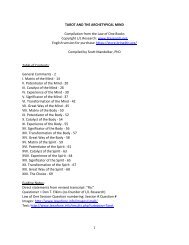
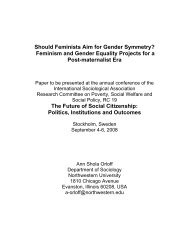


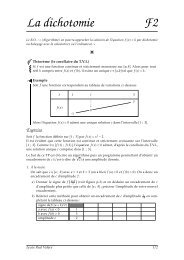

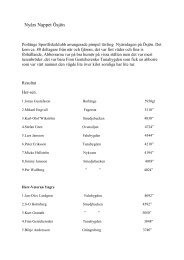


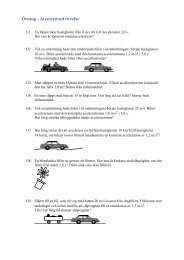

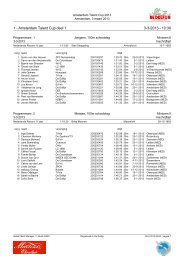

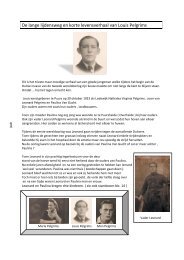
![Analisis Filologis Naskah Merong Mahawangsa [unduh] - Dropbox](https://img.yumpu.com/17722686/1/184x260/analisis-filologis-naskah-merong-mahawangsa-unduh-dropbox.jpg?quality=85)